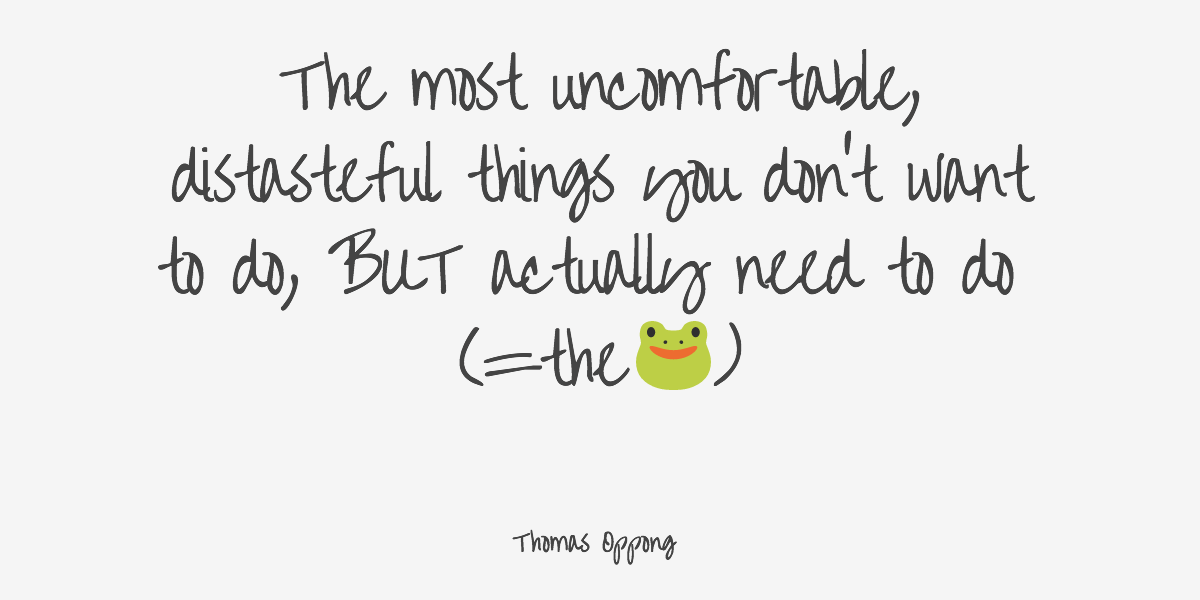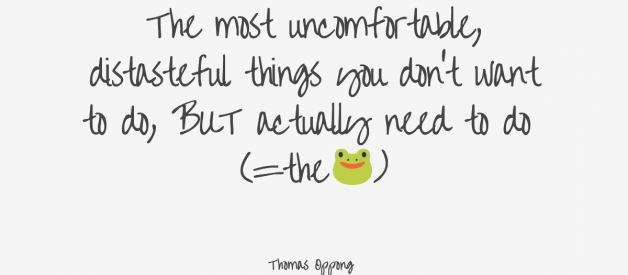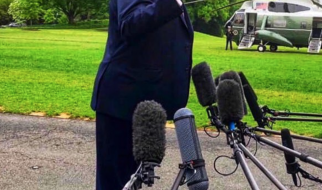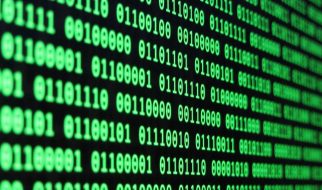
Planning and prioritizing is a huge human problem.
Imagine a day without unnecessary meetings, colleague distractions, social app notifications, checking emails every minute and a day without procrastinating most tasks.
Sounds impossible, right?
But it really shouldn?t be that hard to get real work done everyday.
If you eliminated all the time you spend on what doesn?t amount to real work, you will be surprised at what can be achieved every week.
Get that uncomfortable frog out of the way!
?If it?s your job to eat a frog, it?s best to do it First Thing in the Morning. And if it?s your job to eat two frogs, it?s best to eat the BIGGEST one first.? ? Mark Twain
You probably know about Brian Tracy?s famous?eat-a-frog?-technique from his classic time-management book, Eat That Frog!: 21 Great Ways to Stop Procrastinating and Get More Done in Less Time.
Brian Tracy cuts to the core of what is vital to effective time management: decision, discipline, and determination.
In the morning, right after getting up, you complete the most unwanted task you can think of for that day (= the frog).
Ideally you?ve defined this task in the evening of the previous day.
There are hundreds of things you could choose to do in your first hour awake. Completing an uncomfortable or difficult task not only moves it out of your way, but it gives you great energy because you get the feeling you?ve accomplished something worthwhile.
How do I spot the famous frog?
To get a better overview of your tasks, divide your to-do list in these four categories:
? Things you don?t want to do, but actually need to do. ? Things you want to do and actually need to do. ? Things you want to do, but actually don?t need to do. ? Things you don?t want to do, and actually don?t need to do.
And then focus on the things you don?t want to do, but actually need to do.The biggest, ugly, distasteful things that need to be done, but tend not to.
You are most likely not motivated to do them, leaving them victim to procrastination.
..but I work best under pressure!
Some people work better under pressure. You can call them active procrastinators.
Active procrastinators who postpone work for later are mostly in control of their time and use it purposefully without worrying too much about missing deadlines.
This doesn?t apply to to passive procrastinators who easily get anxious and can?t master the courage to concentrate and get stuff done because they are constantly thinking of running out of time.
If you know yourself well enough, you can better plan and do tasks without the anxiety that comes with deadlines.
Stop saying yes to sh*t you hate (and limit your frogs)
Life?s too short to say yes to things, activities, events, and tasks you hate.
Saying YES is driving some people insane. Stop telling yourself you can?t help it. Yes, you can. Stop wasting your time and energy.
Especially if you work for yourself. You always have a choice. Choose your work and projects cautiously.
Of course, It?s not always easy to know if the activity or task in question is worthy of a yes.
If what you are accepting to do won?t improve, enhance or make you a better person, just say NO and focus on projects that are mutually beneficial to you and the other party.
Find tasks that energize you and light you up, and say yes to those instead. You will be a happy and better person in the end.
These are Paul Jarvis? internalization questions that can help you make the right choice about what you should be focusing you time and energy on, especially of you work for yourself:
- Is this something I care about?
- Does this conflict with my values, personality, or style?
- Is this how I want to spend my day?
- Will this light me up and want to keep me going?
- Is this something I need in my life right now?
Use David Allen?s famous ?Two-Minute Rule?!
It?s very simple: When a new task comes in and you can do it in less than two minutes, then focus on doing it right away.
This easy rule can increase your productivity a lot especially when it comes to replying emails.
It?s not a groundbreaking rule, it?s no fancy app, it doesn?t even require learning or dedication, but it works!
Practice creative procrastination
?One of the very worst uses of time is to do something very well that need not to be done at all.? ? Brian Tracy
You can?t do everything in a single productive day. Learn how to deliberately put off those tasks that are of low value so that you have enough time to do the few things that really count.
Innovators and creative professionals use procrastination to their benefit more often than everyone else.
Leonardo Da Vinci was a famous procrastinator. He is believed to have worked on the well-know Mona Lisa between 1503 and 1517.
Identify your periods of highest mental and physical energy each day, and structure your most important and demanding tasks around these times.
Practice working on your highest-priority tasks and with time you will develop the habit of focusing on your most important tasks when you are most productive.
Take an action today!
Eating frogs and completing your hardest task first isn?t always pleasant. The best ?productivity hack? is to actually know what to do and when to do them.
And don?t confuse activity with efficiency.
Get that single most important task done today. Don?t procrastinate. Just get on with those frogs. You will have to eat them at some point.


